What can manorial records tell us?
Manorial records are notable for being one of the types of document where information about ordinary people - not just the upper classes - is likely to have survived, perhaps even from the medieval period.
Manorial papers can be an important source for the history of the land. They reveal information about how land was managed and cultivated and also give insights into the nature of land tenure and patterns of inheritance, the developing movement towards enclosure and changes in agricultural practice - for example, what crops were planted and how, and what livestock were kept and why.
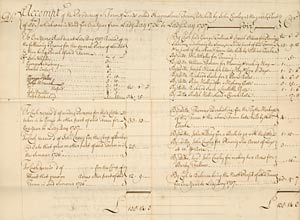
Accounts from the manor of Dracklow and Rudheath (Pl E41/20/1) with detail below
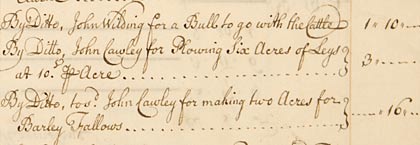
Manorial records also contain a wealth of economic and financial detail. It is possible to see changes in accounting practice, to glean information about the changing value of land and of goods, to chart variations in income and expenditure levels, or to follow patterns of inflation, for instance in food prices. These, in turn, may reflect wider economic factors such as a nation-wide crop failure. It is also possible to chart the development of the monetary economy, with the movement away from payment in goods or service towards pecuniary payment.
For family historians and genealogists, manorial records are a useful, if sometimes neglected, source, particularly for the period before extensive parish registers were kept. They are packed with lists of names, sometimes associated with details of occupations or of relationships. Sometimes they may include the age of an individual, perhaps at the time of a surrender or admission, and they may include copies of wills, conveyances or mortgages. In this way, they can be invaluable in helping to build up rounded pictures of individuals.
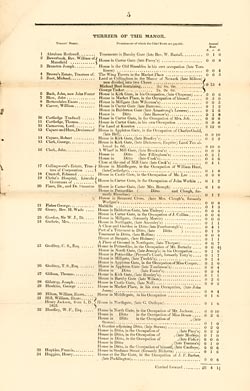
Terrier of the manor of Newark (Ne 6 M 1/3/2/3/3) with detail below

Perhaps one of the most interesting aspects of manorial records is the fascinating insight they provide into the day-to-day life of ordinary people. By recording details of what people did, when and why, by showing what their individual and common responsibilities were, by noting what they considered to be crimes and how those crimes were punished, by showing which officials operated within communities, they provide a window on the workings of past societies. It is possible, for example, to see who had failed to repair their hedge or ditch, or who had grazed their cattle in the wrong place at the wrong time.

Detail from Presentment of John Wood (Ne M 210)
There is much else to be learned from manorial records. They contain, for example, a great deal of topographical information - the location of particular features, information about field and place names. They may also contain information about the exploitation of minerals in a particular area. Finally, they can even provide evidence for use in population studies.
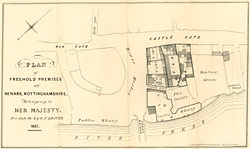
Plan of Newark (Ne 6 M 1/3/2/3/3) with detail below
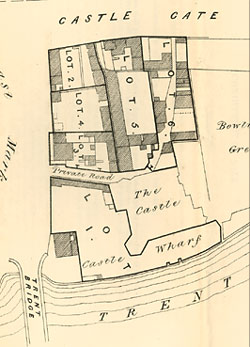
Next page: Some Resources to Aid the Understanding and Interpretation of Manorial records